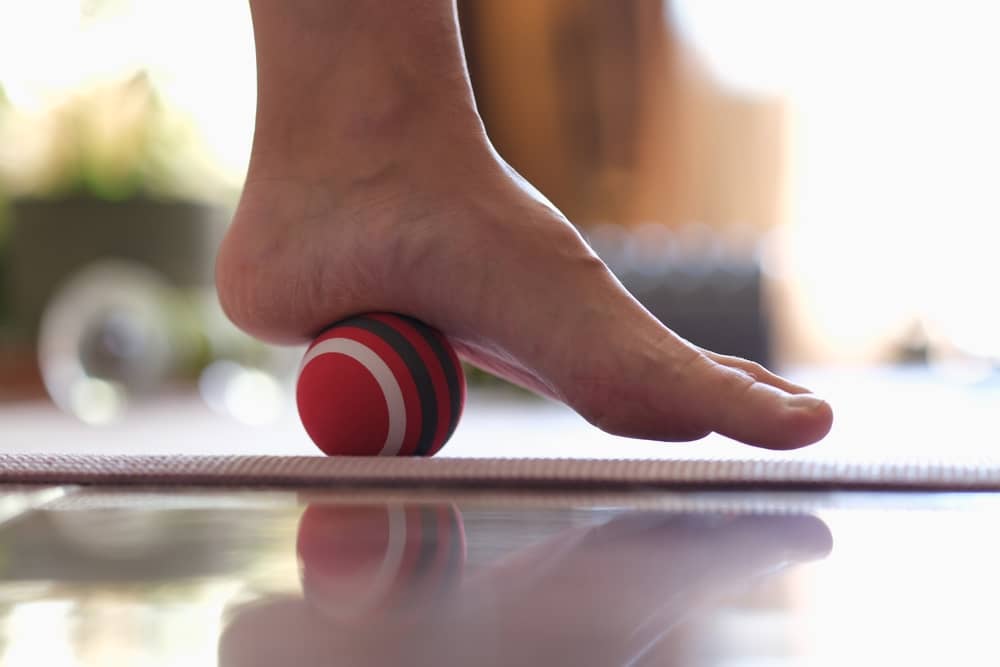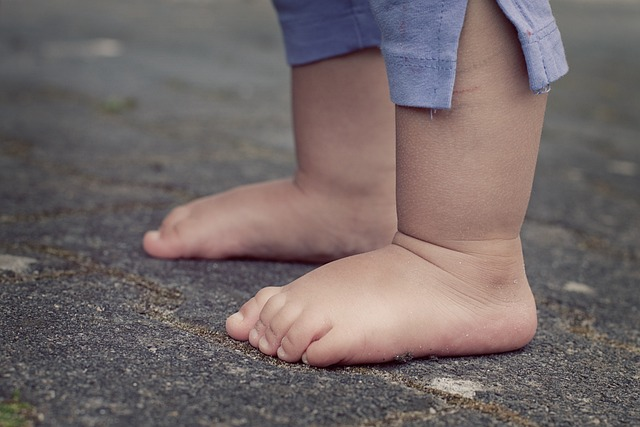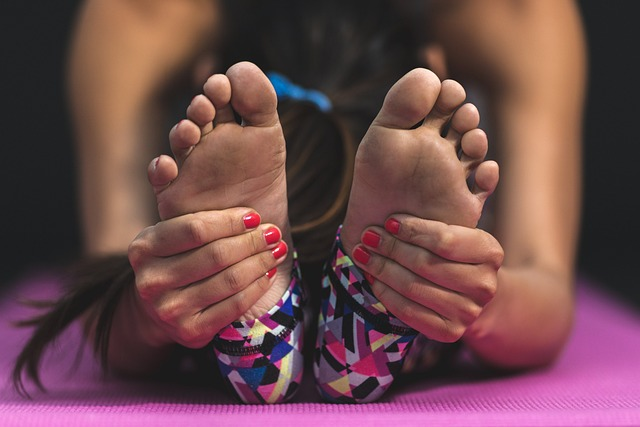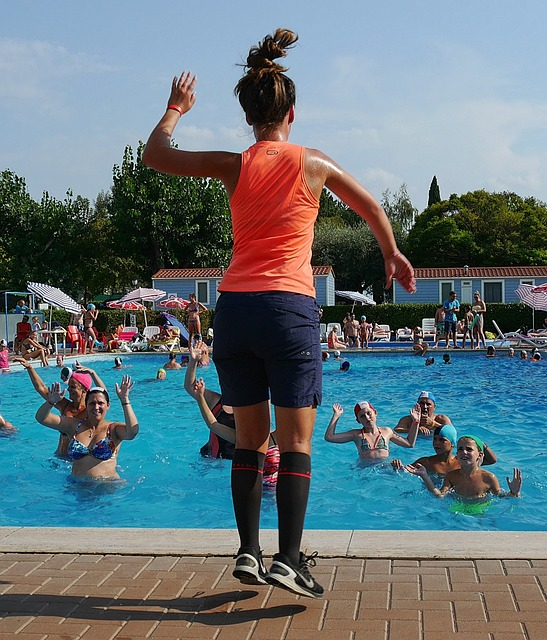Feet-Relief is supported by our audience. When you purchase through one of our links, we may earn a small affiliate commission. As an Amazon Associate I earn from qualifying purchases.Your cost is not affected.
When a family member began having foot pain, we noticed that she had flat feet. It was time to begin flat feet exercises to help her strengthen her arches and relieve the pain. Do you know someone that experiences pain from flat feet?
Flat Feet Exercises: Proactive Steps Towards Optimal Foot Health
Key Takeaways
- Causes and Symptoms of Flat Feet
- Exercises for flat feet
- Precautions to Consider
- Professional help
Flat feet
You are likely here because you or someone you know is dealing with flat feet. You are seeking remedies, solutions, or ways to mitigate the discomfort or pain often associated with this condition. This article focuses on flat feet exercises, a natural and proactive approach to managing and improving flat feet condition.
Learn the causes and symptoms of flat feet, the importance of exercise, the specifics of flat feet exercises, and the exercises to avoid. We include how often to exercise, additional treatments, precautions, and when to consult a professional. Read the success stories and be inspired and motivated you to take charge of your foot health.
Causes and Symptoms of Flat Feet
Flat feet, also known as fallen arches, is a condition where your feet have low or no arches, causing them to press flat against the ground. You might have been born with flat feet or developed them over time.
Many things can cause flat feet. They might be due to aging, injuries, obesity, rheumatoid arthritis, or diabetes. Poor fitting footwear might also cause flat feet to develop.
Cloud Massage Shiatsu Foot Massager Review: Is it Worth the Investment?
Diagnosing Flat Feet
Flat feet are easy to spot. If you stand or sit with your feet flat on the floor, look for that arch between the ball of your foot and the heel. If you see minimal or no space between the floor and your arch region, you have flat feet.
Many people are unaware of their lack of arch. They experience symptoms but assume they are just tired or have been on their feet too long.
If you experience foot pain, consider the possible causes. Symptoms of flat feet include foot pain, particularly in the heel or arch area, swelling along the inside of the ankle, feet tiring easily, and difficulty with foot movement.
Why strengthening flat feet is important
Strengthening flat feet is important. Flat feet often lead to pain, stress, and imbalances in other parts of your body. They can even affect your neck, back, and hips. Flat feet affects the mechanics of your feet and changes your gait and weight distribution. This can cause problems in your foot, ankle, knee, hip, or back. By working to treat flat feet with exercises that target the muscles and tendons that support the arch, you help to bring your entire body into alignment and prevent or reduce these issues.
More Serious problems
Flat feet might lead to a number of health problems, especially if they are accompanied by pain, inflammation, or overpronation. Some of the serious health issues caused by flat feet are:
Arthritis:
Achilles tendinitis:
Bunions:
Shin splints:
Plantar fasciitis:
Jan’s story
These health issues can affect your mobility, quality of life, and overall well-being. In fact, a friend of mine developed back problems from her flat feet. When walking caused painful symptoms, she adjusted her stance. Over time, she needed corrective help for her spine and neck region to compensate.
The Importance of Exercise for Flat Feet
If you have flat feet, exercise is your ally. It helps strengthen your foot muscles, improve your balance, and promote better alignment.
With regular flat feet exercises, you can reduce your symptoms and improve your foot health. Exercise also helps you maintain a healthy weight, reducing unnecessary strain on your feet. While it’s not a quick fix, a consistent exercise regimen helps lead to significant improvements over time.
Understanding Flat Feet Exercises
Before delving into flat feet exercises, it’s essential to understand what they entail. Flat feet exercises are a series of physical activities designed to strengthen the arches of your feet, enhance your balance and coordination, and alleviate the symptoms associated with flat feet.
These strengthening exercises target the muscles in your feet and lower legs, helping to develop and maintain the arches of your feet.
Proactive Steps: Simple and Effective Flat Feet Exercises
Ready to take proactive steps towards optimal foot health? Here’s a list of simple and effective flat feet exercises you can do at home:
Heel Raises:
Stand straight and slowly raise your heels off the ground, standing on your toes. Hold for a few seconds, then lower your heels. Repeat this exercise 10-15 times.
Arch Lifts:
Sit on a chair with your feet flat on the ground. Keep your toes on the floor and lift your arches as high as you can. Hold for a few seconds, then lower your feet. Repeat this exercise 10-15 times.
Toe Yoga:
Sit or stand and lift all your toes, spreading them wide. Then lower them back down. Repeat this exercise 10-15 times.
Tennis ball roll
One exercise that uses a tennis ball to help flat feet is the tennis/golf ball roll. This exercise can help to massage and stretch the arch of your foot. To do this exercise, you need to:
- Sit on a chair with a tennis or golf ball under your right foot.
- Roll the ball under your foot, focusing on the arch. Do this for 2–3 minutes.
- Repeat on the opposite foot.
You can do this exercise several times a day to relieve pain and tension in your feet.
Exercises to Avoid If You Have Flat Feet
While exercises are beneficial for flat feet, not all exercises are suitable for this condition. High-impact exercises like running, jumping, or any activities that put a lot of stress on your feet can exacerbate your symptoms and should be avoided.
Instead, focus on low-impact exercises like swimming, cycling, or walking, which are gentler on your feet. And always make sure you wear proper footwear to provide support.
How Often Should You Do Flat Feet Exercises?
Consistency is key when it comes to flat feet exercises. Aim to do these exercises at least three times a week. In fact, many podiatrists recommend doing them throughout the day, each day.
These more frequent but short sessions make a big difference over time. Remember, it’s not about how much you do in one session, but the regularity of your exercise regimen. This consistent approach will help you see improvements over time.
Additional Treatments for Flat Feet
In addition to flat feet exercises, other treatments can alleviate your symptoms. These include using orthotic devices, wearing supportive shoes, losing weight if you’re overweight, and taking over-the-counter pain relievers if necessary.
In severe cases, surgery might be required. However most people find good relief without.
Always consult with a healthcare professional before starting any new treatment.
Precautions to take
Before starting any exercise regimen, it’s important to take certain precautions.
Start slow, especially if you’re new to exercise. Don’t push yourself too hard, as this can lead to injuries.
Listen to your body—if an exercise causes pain, stop doing it.
And finally, always warm up before exercising to prepare your muscles and avoid injury.
When to consult a professional
While flat feet exercises can be done at home, it’s crucial to consult a professional if your symptoms persist or worsen over time. A podiatrist or physical therapist can provide a proper diagnosis and personalized treatment plan. They can also guide you through the correct form and technique for exercises to ensure effectiveness and prevent injury.
Flat Feet Exercise Success Stories
To inspire you, here are a few success stories from people who’ve significantly benefited from flat feet exercises. J
ohn, a 35-year-old office worker, was able to reduce his foot pain and improve his balance after consistently doing heel raises and arch lifts for several months.
Similarly, Mary, a 50-year-old teacher, found relief from her foot pain and increased her walking endurance after incorporating toe yoga into her daily routine.
These stories highlight the potential benefits of regular flat feet exercises and underscore the importance of consistency and patience.
Managing Flat Feet for Health and Happiness
Flat feet can be challenging. But with the right approach, you can manage your symptoms and improve your foot health. Flat feet exercises, along with a healthy lifestyle and the right footwear, usually make a significant difference.
Remember, consistency is key, and it’s always important to consult a professional if you have any concerns. Now that you’re equipped with the knowledge about flat feet exercises, it’s time to take proactive steps towards your optimal foot health.
Frequently Asked Questions
Is it possible to have one foot flat and one not?
Yes, it is possible to have flat feet in one foot and not the other. This condition is called unilateral flatfoot. It can occur due to various reasons, such as:
- An injury or trauma to the foot or ankle that affects the arch structure or function.
- A congenital disability or deformity that prevents the arch from developing properly in one foot.
- A disease or disorder that affects the muscles, nerves, or bones of the foot, such as cerebral palsy, muscular dystrophy, or Charcot-Marie-Tooth disease.
Unilateral flatfoot can cause pain, discomfort, and difficulty in walking, running, or standing. It can also affect the alignment and balance of the entire body. Therefore, it is important to seek medical attention if you have flat feet in one foot and not the other. Depending on the cause and severity of your condition, you may need orthotics, braces, physical therapy, or surgery to correct your flatfoot.
Related Reading
Amazon and the Amazon logo are trademarks of Amazon.com, Inc, or its affiliates.







